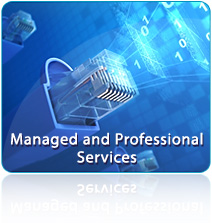Nowadays, data and information exchange is very important. It shapes the pace of most business undertakings.
In a typical office environment, networking is essential not just for Internet connections but for data/file and printer sharing which is usually availed with DSL or T1 bandwidth. Despite these simple needs, it is very important for any business to understand its data network needs to be able to make the best decision on which service best serves such needs.
DSL Internet for business uses a residential service technology. To get a faster output with uploads, it uses a digital line with compression protocols. It can download up to 3MD depending on the location. The same with residential access, business service suffers with distance. That is, if the business is far from the central telecommunications office, the throughput speed is affected. Aside from this, the service can be spotty and the number of subscribers may decrease.
Most DSL Internet providers say that a single DSL business line is not sufficient to support more than 20 people. Ten (10) is the most realistic number it can support. However, even with only ten users, slowdowns can transpire if everyone transfers data. In addition, DSL service does not guarantee no lag in transmission with additional users.
On the other hand, T1 is a dedicated service. It has a guaranteed and consistent uptime performance and speed. It is a large pipe used to transmit digital voice and data signals from a business location to the requested media. It can manage both voice and data, and has 24 fixed channels to transmit information. It can support up to 50 users with their own bandwidth to avoid disrupting other users. Finally, with T1, a Service Level Agreement (SLA) assures subscribers of a fast and prioritized solution to any Internet disruption ensuring uninterrupted business operations. With this guaranteed bandwidth, T1 is well worth its price but is prohibitive to small businesses. The absence of a similar agreement with a DSL package compromises business operations without much assurance. And basically, T1 is a business connection while DSL is a residential connection.



